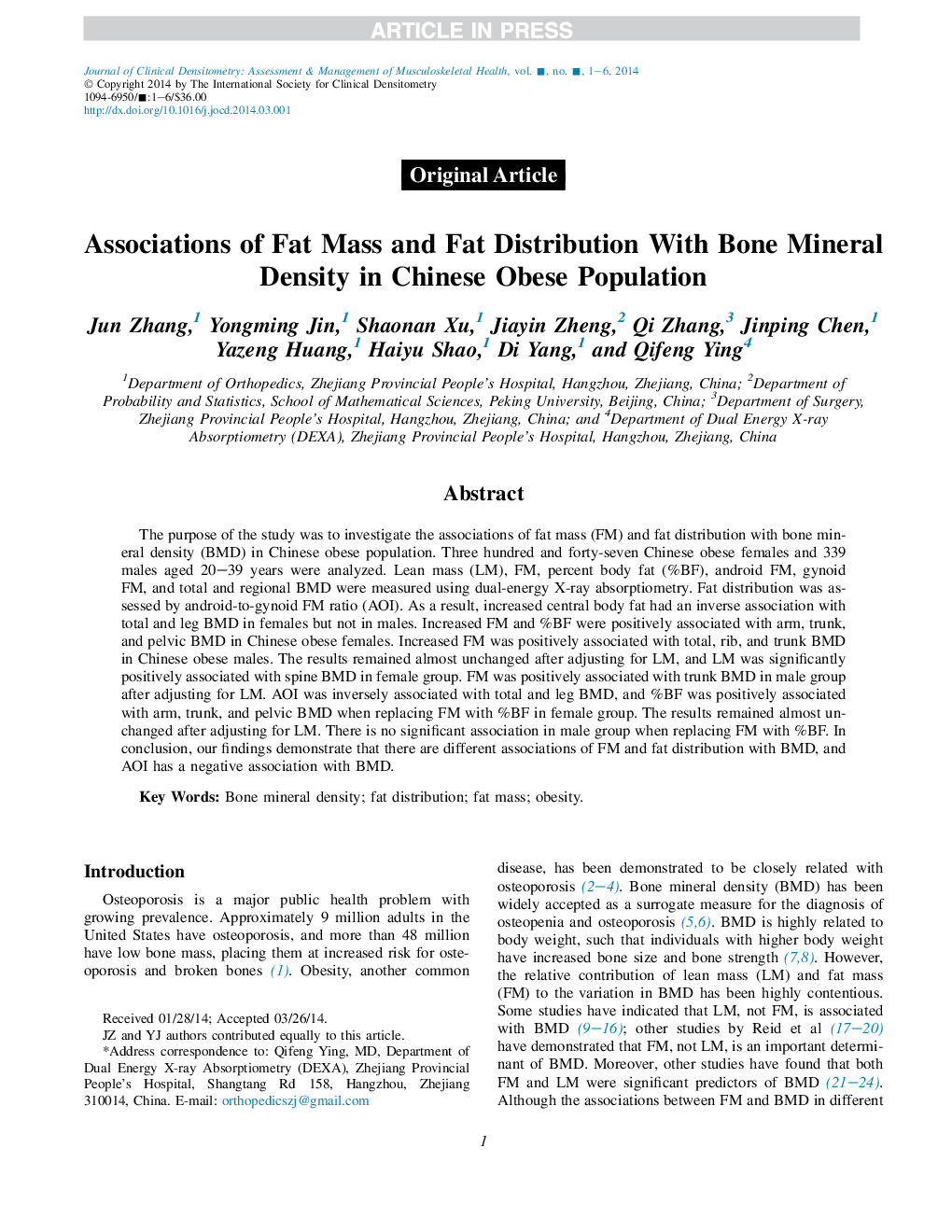| Article ID | Journal | Published Year | Pages | File Type |
|---|---|---|---|---|
| 10168028 | Journal of Clinical Densitometry | 2015 | 6 Pages |
Abstract
The purpose of the study was to investigate the associations of fat mass (FM) and fat distribution with bone mineral density (BMD) in Chinese obese population. Three hundred and forty-seven Chinese obese females and 339 males aged 20-39Â years were analyzed. Lean mass (LM), FM, percent body fat (%BF), android FM, gynoid FM, and total and regional BMD were measured using dual-energy X-ray absorptiometry. Fat distribution was assessed by android-to-gynoid FM ratio (AOI). As a result, increased central body fat had an inverse association with total and leg BMD in females but not in males. Increased FM and %BF were positively associated with arm, trunk, and pelvic BMD in Chinese obese females. Increased FM was positively associated with total, rib, and trunk BMD in Chinese obese males. The results remained almost unchanged after adjusting for LM, and LM was significantly positively associated with spine BMD in female group. FM was positively associated with trunk BMD in male group after adjusting for LM. AOI was inversely associated with total and leg BMD, and %BF was positively associated with arm, trunk, and pelvic BMD when replacing FM with %BF in female group. The results remained almost unchanged after adjusting for LM. There is no significant association in male group when replacing FM with %BF. In conclusion, our findings demonstrate that there are different associations of FM and fat distribution with BMD, and AOI has a negative association with BMD.
Related Topics
Health Sciences
Medicine and Dentistry
Endocrinology, Diabetes and Metabolism
Authors
Jun Zhang, Yongming Jin, Shaonan Xu, Jiayin Zheng, Qi Zhang, Jinping Chen, Yazeng Huang, Haiyu Shao, Di Yang, Qifeng Ying,
